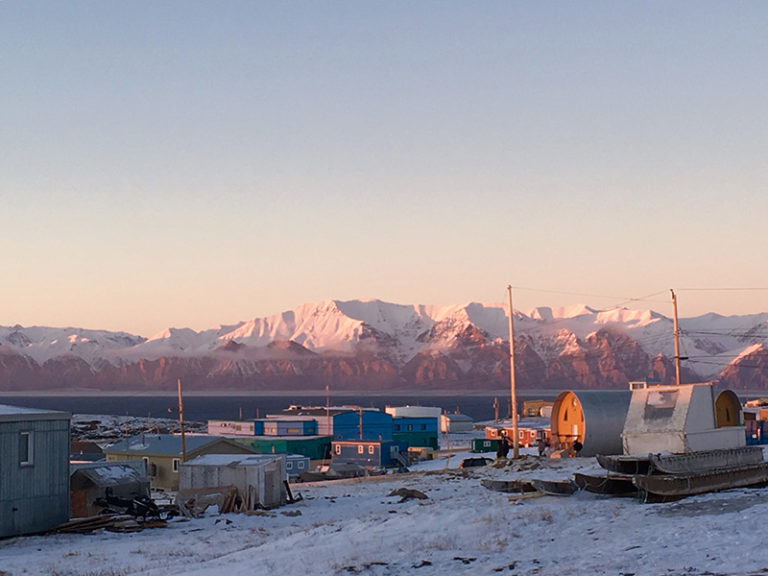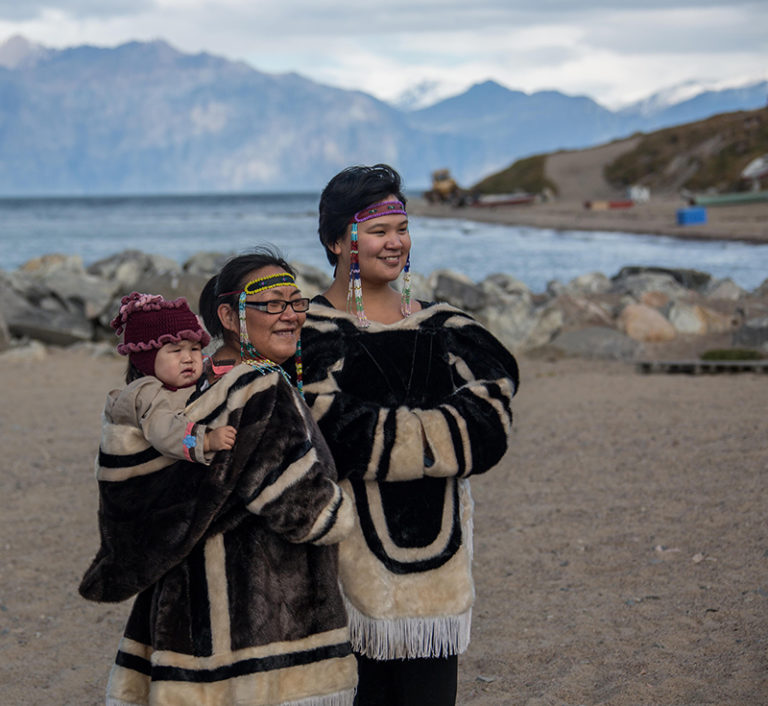Alex Anaviapik is a Culture Guide with One Ocean Expeditions. The region she is from, the Qikiqtani (from the island), specifically Tununiq (the shadow cast by the mountains) ranges from Mittimatalik (Pond Inlet) to the Arctic Bay Area. The population of Alex’s home town is roughly 1500-1600. “Inuit are located from Greenland to eastern Siberia, all along the shoreline. Each region has its own specific clothing and dialect, but all are still Inuit.” she explains.

Studying culture and tourism, Alex has a passion for teaching guests onboard about the North, its culture and its people. She takes the time to inform passengers about the daily life of the Inuit, talking about historical perspectives, cultural differences, language and dance. She feels it is important to remind people that ‘there are no silly questions!’. This is a unique opportunity for many, as Alex may be the first Inuk that they have had the opportunity to openly talk to in such a way.

Another highlight for guests onboard is watching Alex perform her cultural drum dancing and listening to her beautiful signing. She has not yet had the chance to demonstrate the traditional throat singing however, as this is usually performed by two people, mostly women, overlapping their breath and sound to make a song.

Alex explains that women started throat singing to entertain themselves with the songs and also to calm their babies when the men were out hunting. Throat singing reverberates the torso, and so the baby, traditionally carried on the back, would become calmer after a few songs. Each song is an imitation of the sounds of nature:
The river
A mosquito
A goose
Seagulls
And new ones such as the ‘saw’; an imitation of the sound of a saw cutting wood.
Believing in the powerful experience that is visiting the North, Alex helps guests see things from the Inuit point of view and offers a unique perspective on Inuit life and history. She explains that Inuit clothing is usually made out of seal and caribou skin, with each cut and pattern carefully crafted to preserve the longevity of the clothing and to make it as warm as possible.

The ‘amauti’ that people often associate with Inuit women is specifically designed to carry children on their backs and is still commonly used to this day.

“The Inuit have always been adaptable, whether meeting the whalers, the Hudson Bay traders, the missionaries who forced us to create settled communities in which we have to live all year round – no matter what, we have adapted to the modern way of life, yet continue to preserving our culture and language. Blending the two, in my opinion, is a beautiful thing.”
Alex was also recently featured in Can Geo’s Lifetime Experience which you can view here.















